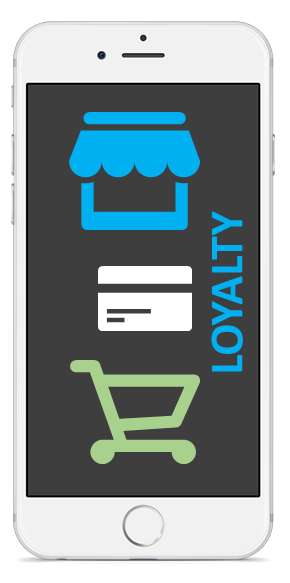Can CPS Cards help with your loyalty or gift card program? Contact us or call 888.817.8121 to request a free quote.
Loyalty Programs: The Challenge with Going Mobile
Nothing says “spring” like a day of shopping for the latest fashions of the season. So this past weekend, with my spring clothing budget in hand, I headed off to my favorite national chain department store. After loading up on “all things spring”, it was time to check out. I walked up to the register, whipped out my phone and – – TAA-DAA!—my loyalty app didn’t work. Again. Just like the last several times. The POS scanner failed to recognize my bar code and, even after entering the information manually, I was not found in their system. The solution? “Do you have your loyalty card with you?”
Fast forward to yesterday, when I came across an article that advocated the use of mobile loyalty apps and an end to plastic loyalty cards entirely. The author’s argument, in a nutshell, was that mobile programs offer more flexibility, more targeted marketing opportunities and less plastic in consumers’ wallets. While I agree that mobile apps allow merchants to use big data to create targeted messaging, I also believe that there are still some shortcomings to loyalty apps, and, thus, a continued need for a back-up card.
The Shortcomings of Mobile Loyalty Programs
AVAILABILITY. Not all merchants offer mobile apps, so overall adoption is spotty at the current time. Until more, or all, merchants get on board, consumers will not always think about adding your brand’s app to their phone. And while there are third-party loyalty apps that house all loyalty cards digitally, like KeyRing and StoCard, each app offers different features that may or may not be in line with merchants’ marketing programs.
STORAGE SPACE. On average, U.S. consumers belong to 13.3 loyalty programs. If all merchants were to migrate to a mobile-based loyalty platform, this would require consumers to install a number of apps on their phones. This could require a lot of storage space that could be used for other personal data, such as photos, social apps and games. Some consumers are not willing to give up the things they access daily in order to be loyal to a brand, therefore, some merchants will miss out.
RELIABILITY. Just as in my recent experience, sometimes technology simply fails. Think about how many times you have been inside a store and your signal was non-existent. You edge towards the front of the store hoping that a glimmer of daylight will magically beam a signal to your phone, but no – nothing. Batteries die, phones get lost or stolen and consumers are left with supplying their phone number at the checkout, which can be overhead by other customers and then used to steal earned rewards. A back-up card could help to combat such obstacles.
GENERATION GAP. In the U.S., only 64% of Americans own a smartphone, so if you are only offering a mobile-based loyalty program (and no card), you could be missing out on a third of the population. While the younger generations (Y & Z) were practically born with a mobile phone in their hand, the Baby Boomers are slow adopters of technology. For brands that rely on Boomer business, the option of both a mobile app and a physical card will appease both traditionalists and tech-saavy consumers.
SOFTWARE FAILURE. On a separate trip to this same department store, I had planned on using a $10 reward coupon I had earned for being a loyal customer. An email earlier in the week had reminded me about this little perk, so I loaded up the store’s app on my phone and found the $10 reward in my account. However, to use the reward, I had to transfer it to the app’s wallet, which I did. I opened the wallet – “$0 in Rewards” appeared. I spent the next 30 minutes at the store’s customer service desk to correct the problem. Although the problem was fixed, this was the first time that I tried to redeem a reward using the app and it failed. Imagine if this problem continues to occur – – a loyal customer will become a frustrated customer. If you are planning on limiting your rewards program to a mobile-based system, ensuring that the technology works across all devices and platforms is an absolute must.
Although mobile technology plays a major role in our society today, there is still a place (and reason) for physical loyalty cards. Providing options for your customers allows them to continue to engage with your brand, even when technology fails.